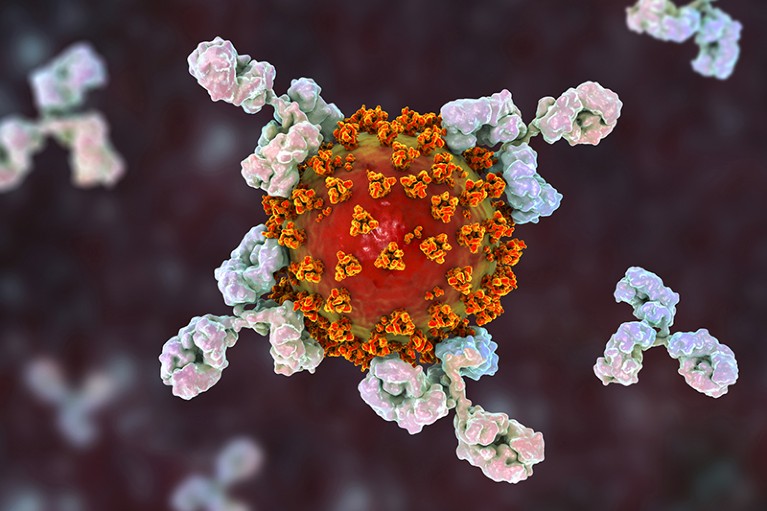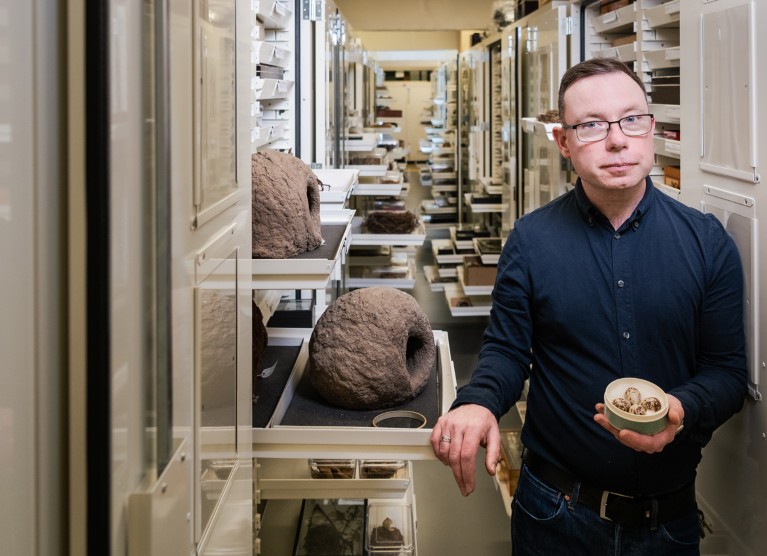Hello Nature readers, would you like to get this Briefing in your inbox free every day? Sign up here.

For those vaccinated against COVID-19, antibody levels eventually wane, but this is not the whole story.Credit: Kateryna Kon/Science Photo Library
How long does COVID immunity last?
As discussions over booster shots heat up, what’s known about the duration of vaccine-based immunity against COVID-19 is still evolving. Levels of neutralizing antibodies — the shock troops of our immune system — typically shoot up after vaccination, then quickly taper off months later. The reserves, memory B cells and T cells, stick around to fight off infection for much longer. How long, and how effectively, remains a question. Evidence hints at a growing risk of breakthrough infection over time, but vaccinated people still seem to be protected from severe illness.
Pfizer–BioNTech vaccine for young kids
Pharmaceutical giant Pfizer and German biotechnology company BioNTech say a child-size dose of their COVID-19 vaccine generates a robust antibody response in children ages 5 to 11. Data from the phase II/III trial, which have not yet been published or peer reviewed, show that side effects were “generally comparable” to those in young adults. There were not enough cases of COVID-19 among trial participants to determine the vaccine’s efficacy, says a Pfizer representative. The companies plan to submit the data to regulators to extend emergency use approval for the jab “with urgency”. Early results for trials in even younger children, at even smaller doses, are expected later this year.
Reference: Pfizer and BioNTech press release
Australian funder reverses preprint ban
Australia’s major research-funding body will no longer reject applications for early-career funding for mentioning preprints, under pressure from researchers who decried the ruling as “astonishing” and “outdated”. The change will not apply automatically to applications that were previously ruled ineligible or are currently under review. Several rejected applicants, who can’t apply again because fellowship-application attempts are limited, told Nature last month that the rule had effectively ended their careers.
Economics omits global-south researchers
A large proportion of research on economic development does not involve any researchers in the global south. An analysis of nearly 25,000 papers found that 73% had authors that were all based in the global north. Within a subset of more than 15,000 articles explicitly focused on a country or region in the global south, 62% had no authors from that region. “We know there are structural barriers in the world,” says economist Grieve Chelwa. “But once you begin to quantify it in a systematic way, the gravity of the problem really just comes home.”
Features & opinion
Single-cell proteomics takes centre stage
Most single-cell studies focus on nucleic acids, especially the transcriptome, which represents all the expressed genes in a cell. That’s about to change. Advances in instrumentation, analytical tools and sample preparation are allowing a closer look at the cell’s ‘worker bees’: the proteins. “The amounts, the post-translational modifications, the proteoform dynamics — this is what is closer to the phenotype,” says biochemist Neil Kelleher. “And that means that disease diagnostics, response to drugs, all the human biology we want to engage with — to control, steer, detect — it needs proteomics.”
What’s heating the solar corona?
The Sun’s corona — a halo of hot plasma that extends millions of kilometres into space — is a million times dimmer than the solar surface, but is at least 1 million K hotter. Physicists have struggled to find an explanation: a review in 2000 listed 22 theories, all of which are still in the running. Physicist Philip Judge guides us through one of the biggest mysteries in astronomy, including a handy video explainer.
Where I work

Douglas Russell is senior curator at the Natural History Museum at Tring, UK.Credit: Alecsandra Dragoi for Nature
Curator Douglas Russell oversees the egg and nest collection at the Natural History Museum at Tring, UK. “Our nest and egg collections are the most comprehensive archive of information on bird breeding in the world,” says Russell. “Next to me is a 1928 mud nest from Argentina that was made by the rufous hornero (Furnarius rufus), known for its large, globular nests that shield eggs and young from predators.” (Nature | 3 min read)
